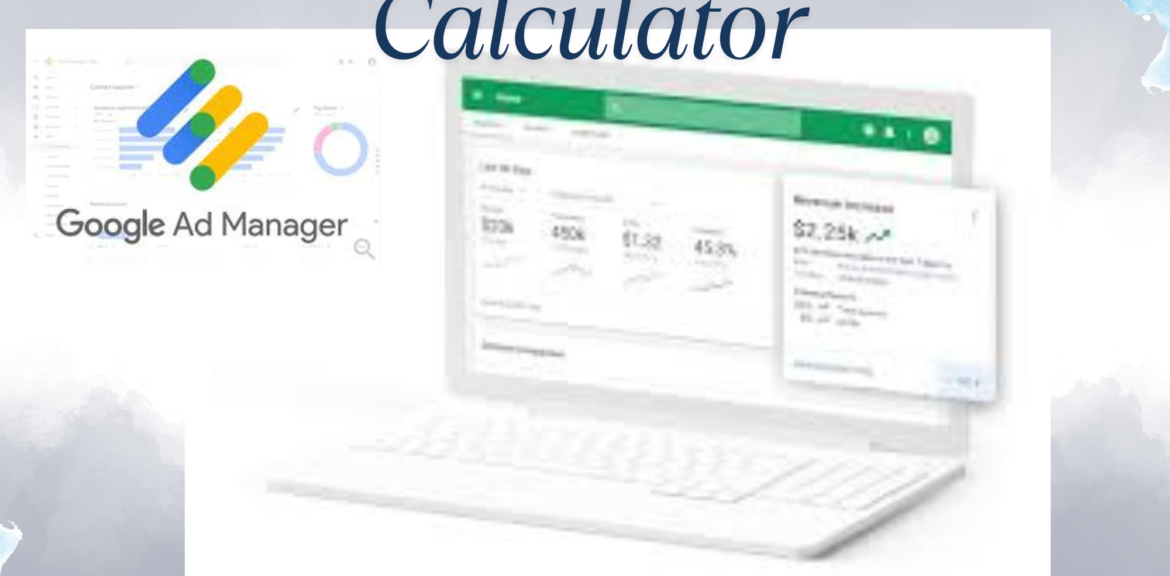
Digital ads can be measured in thousands of ways-impressions, clicks and conversions, to name a few. KPIs become of great importance in defining whether the campaign was successful or a flop and what its ROI is. CPM calculators are useful to decide cost per thousand impressions to define advertisement costs and optimize the campaign performance.
What Is Cost Per Thousand CPM Calculator ?
Cpm (costs per thousand) is the price of exposure on a web page to some advertisements on a thousand impressions.This pricing model helps the advertisers as it tells them how efficiently their campaigns are performing just by how much they reflect as spending per thousand views delivering their ads to the target people.

How to Calculate Cost Per Thousand (CPM)
CPM is calculated by dividing the total cost of advertising which was done online by the total number of processed impressions, which are then multiplied by 1,000.For instance, if a campaign of $500 delivers an impression quantity of figures higher than only 100,000 impressions, then the CPM is fundamentally higher than $5.

What Is a Bad Cost Per Thousand (CPM)?
A high CPM can be undesirable in case it affects your ROI adversely. If you are spending too much on ads yet not realizing proportional returns, it is high time to optimize your strategy. Although it is more difficult to measure results for CPM campaigns based on branding, you must ensure that ad costs remain low and, more importantly, essential and meaningful beyond impressions.
Cost Per Mille (CPM) KPI Examples & Templates
Reports can give rich information regarding your online marketing strategy and performance in general. CPM ad performance can also be added in various templates for KPI, such as:
Why Is CPM Important?
Advertisers engaged in brand awareness make heavy use of CPM primarily in view of the fact that it prioritizes impressions over clicks or direct engagement. It works to great favors when it comes to niche audiences. If one really intends to launch a vegan, gluten-free granola brand, placing ads on an organic market website could, for example, give visibility to this product and build perceptions of the brand.
How to Calculate CPM
CPM is calculated by dividing total campaign expenditure by total impressions to arrive at cost per impression, which is then multiplied by 1,000 to arrive at the cost for 1,000 impressions.
For example: Publisher serves your ad for $1500, and your ad collects 750,000 impressions; therefore, you pay per 1,000 impressions $2.
CPM also applies for the publisher to sell their inventory according to the number of impressions an ad receives. Suppose you’re selling 250,000 impressions, divide that by 1,000 (250), and multiply that amount by the CPM for this case $5.00.
This tells you how much you can potentially earn for that specific ad. Thus, in this example, you, the publisher, could make $1,250 on 250,000 impressions.
What is an average CPM rate?
The CPM rates will depend on the differing platforms, location, industry, and outside trends that are then associated with it. It is not, thus, important to have concern for average rates; it is more important to evaluate the value where impressions are served.
Social media platforms provide an illustration. You can see in the infographic below that Meta would charge 7 dollars plus for getting to 1000 impressions — whereas on X (what used to be Twitter), you’d pay just $1.20. TikTok and YouTube fall somewhere in between
Balancing Cost and Value in CPM
You won’t always want to get the lowest CPM possible. You may want to run your ads on Instagram, where your audience might be very active and more costly, for perhaps the best return of ad spend (ROAS) compared to running similar ads on X. Recent revelations indicate that, on average, social media CPM was close to $6 per 1,000 impressions during Q4 of 2024. Pricing spikes at different times of the year, with higher costs usually associated with the competitive advertising landscape created in the last quarter of the year before Christmas.
The Benefits and Challenges of Using CPM
Cost per mille (CPM) is a highly employed pricing mechanism by both the advertisers and the publishers in terms of the advertisement. However, this comes along with issues for which a strategic resolution is needed.
Advantages of CPM
1. Expansive Reach
CPM visibility achieves a great deal. Brands open doors to thousands of impressions that create awareness and may even recognition when audiences still aren’t ready to buy.
2. Transparent Pricing
With CPM, an advertiser pays a certain rate for a certain number of impressions. Such model of advertising prices makes budgeting easy and predictable for both advertisers and publishers and lets them track costs and revenues simply. CPM is also much more cost-efficient than other monetization models since it is more geared towards exposure than direct sales.
3. Efficient Optimization
It’s so simple that CPM gives advertisers a quick channel- or platform-performance comparison. Once a campaign hits a set number of impressions, the business can rewrite rules of the game or try new advertising options altogether. CPM could be paired with engagement-centered metrics—such as click-through rates or conversion levels—to refine target and creative approaches for better results.
4. Scalable Growth
With such flexibility in CPM, the scaling up or down of campaigns is easy. When the budget permits, an advertiser can increase the number of impressions to increase visibility, while lower spending can be decided upon when the need arises. On the other hand, publishers can either opt to increase or decrease pricing based on the value of each impression for attractive ad placement opportunities.
Challenges of CPM
The problem arises due to the business model of CPM, in which web publishers tend to get paid around USD 2-5 per 1,000 ad impressions.
1. Lack of Guaranteed Conversions
A common misconception of CPM advertising services is that they target impressions while ignoring clicks. Some ads today may enjoy more visibility than ever; yet, if the ads do not reach the right target audience, they may just accumulate views that translate into nothing. Hence, advertisers must look into other performance metrics like clicks and conversions to truly measure their campaigns’ effective performance.
2. Attribution Difficulties
The conversions cannot be attributed back to specific CPM ads with full certainty. A user may have seen an ad, scrolled past it, and only then, days later, decided on a purchase. Unless such an event was properly tracked, attributing that particular action to the ad is next to impossible.
3. Risk of Ad Fraud
Bots inflate the impression numbers, thus making advertisers pay for views that were never there. To curtail this, businesses should go for advertising platforms that detect fraud so that actual consumers interact with their advertisements.
CPM vs. Other Advertising Models
CPM aims at providing the advertisers with the cost of 1,000 impressions. eCPM, or effective cost per mille, is the counterpart to CPM from the publisher’s view- that is, it allows evaluation of incoming revenues. If an app generates a total of $175 daily from 100,000 impressions, then
$175 divided by 100,000 times 1,000 equals $1.75 eCPM.
The publisher here earns $1.75 for every 1,000 ad impressions. While CPM is a mechanism for advertisers to control their spending, eCPM is used by publishers to maximize their revenues.
Cost Per Click or Cost Per Mille (indicating thousand transient audience impressions):
CPM encourages improving awareness among potential customers. At the same time, CPC (Cost per Click) is the best means for acquiring engagement. It pays for interaction, not just impressions, through the same pay-click arrangement for advertisers; they are charged just when a user or potential target clicks on the ad. Because it works for conversions, the disadvantage is that it may become very expensive, depending on the degree of competition.
Cost per Action vs. Cost per Mille:
Unlike CPM, which counts impressions, CPA indicates the clear relationship of ad spending with considerable outcomes. CPA cost models charge for conversions—purchases, sign-ups, etc.—instead of impressions. This pricing model is widely adopted by today’s mobile marketing platforms, where advertisers pay only when a user has been induced to complete specific actions.
CPM and CPV (Cost Per View) :
This model remunerates advertisers for more views of their videos as opposed to impressions. It assures that users enjoy content for a certain fixed amount of time, making it cost-effective. CPM, on the other hand, is based entirely on exposure, irrespective of whether the user engaged with the ad.
CPM vs. CPI (Cost Per Install):
CPI is primarily used in mobile marketing campaigns. Advertisers pay for each app install driven by their ads, making it a more conversion-oriented model than CPM. Since CPI directly affects user acquisition, it tends to be more expensive.
Best Practices to Improve CPM Performance
While the definition of what constitutes a “good” CPM is rather flexible depending on the industry sector and its campaign objectives, what are some strategies that can be used to optimize results?
Target the appropriate audience: the clearer your audience targeting is, greater will be the result of ad performance. Relevant ads will bring the conversion level high and low cost per lead, thus improving ROI.
Ad Frequency is to be Optimized: Again and again, seeing the same ad can cause ad fatigue among users. It is a frequency capping that makes it perform better in engaging audiences but save cash.
Strategic Placement: Where your ad will be on an online site or app greatly affects its viewability and efficacy. Take those placements that go with the user behavior to obtain the maximum impact.
Improve the Creatives: the aesthetics, more persuasive copy, as well as a well-themed identity brand comprise imprinted memory for your ads. Well-crafted creative turns out to better audience engagement.
Seize on the Seasons: it is when CPM is relatively high because it is “peak” advertising season, like holidays. So, target campaigns with the ideal timing.
Test and Modify: Always media CPM against its engagement metrics to adjust your strategy. A/B testing will be able to analyze more effective creatives, placements, and audience segments.
Optimizing CPM on Facebook
The costs can rise exponentially through mismanagement, yet, even at this high level, Facebook remains one of the most preferred advertising platforms. Here is how to control the CPM costs:
Enhance Customer Feedback Rating: After customers purchase through an ad, Facebook surveys them. Higher scores yield lower CPM costs. So to raise your rating, ensure every step of the process, from checkout through customer support, runs like a charm.
Raise Ads’ Relevance: Facebook rewards ads with a high engagement score with lower CPM. Refine your targeting using A/B testing, test ad formats, and optimize creative elements.
Automate and Retarget: The automated placement and rule-based automation features do the past visitors retargeting for maximum performance in the least possible time. With retargeting ads, you know that these users have previously shown interest in your brand.
Final Thoughts
For building brand awareness at scale, CPM is the model of choice. It may not drive purchases in the short term, but it sure does provide the visibility that helps longer-term marketing efforts. By combining CPM with engagement metrics, exploring optimization through A/B testing for targeting, creatives, and placements, we can help you maximize the power of your campaigns.
Will you seize the opportunity to adjust your CPM strategy? Get in touch with Digi Dervish today and take a step to elevation!



